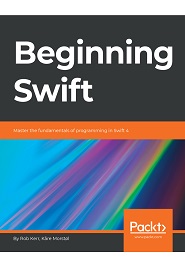
English | 2018 | ISBN: 9781789534313 | 196 Pages | PDF, EPUB | 10 MB
Take your first foray into programming for Apple devices with Swift.
Swift is fundamentally different from Objective-C, as it is a protocol-oriented language. While you can still write normal object-oriented code in Swift, it requires a new way of thinking to take advantage of its powerful features and a solid understanding of the basics to become productive.
This course helps you develop client-side and server-side applications, as well as web services using Swift. We’ll begin with exploring the fundamental Swift programming concepts, language structure, and the Swift programming syntax. Then, we’ll learn to create original custom operators with Swift operators, branching, and loops.
Moving on, we’ll learn how to run application codes and compile errors. Having made progress with it, we’ll see how Swift compares to other computer languages and how to transform your thinking. Then, master the usage of key language elements, such as strings and collections. Finally, grasp how Swift supports modern application development using advanced features, such as built-in Unicode support and higher-order functions.
This is an introductory course to the Swift programming language with Xcode.After completing this course, students will be well-prepared to begin developing native end-user applications for iOS or macOS, or to develop server-side (back-end) application and web services using Swift on Linux.
What You Will Learn
- Explore the fundamental Swift programming concepts, language structure, and the Swift programming syntax
- Learn how Swift compares to other computer languages and how to transform your thinking to leverage new concepts such as optionals and protocols
- Master how to use key language elements, such as strings and collections
- Grasp how Swift supports modern application development using advanced features, such as built-in Unicode support and higher-order functions.
Resolve the captcha to access the links!